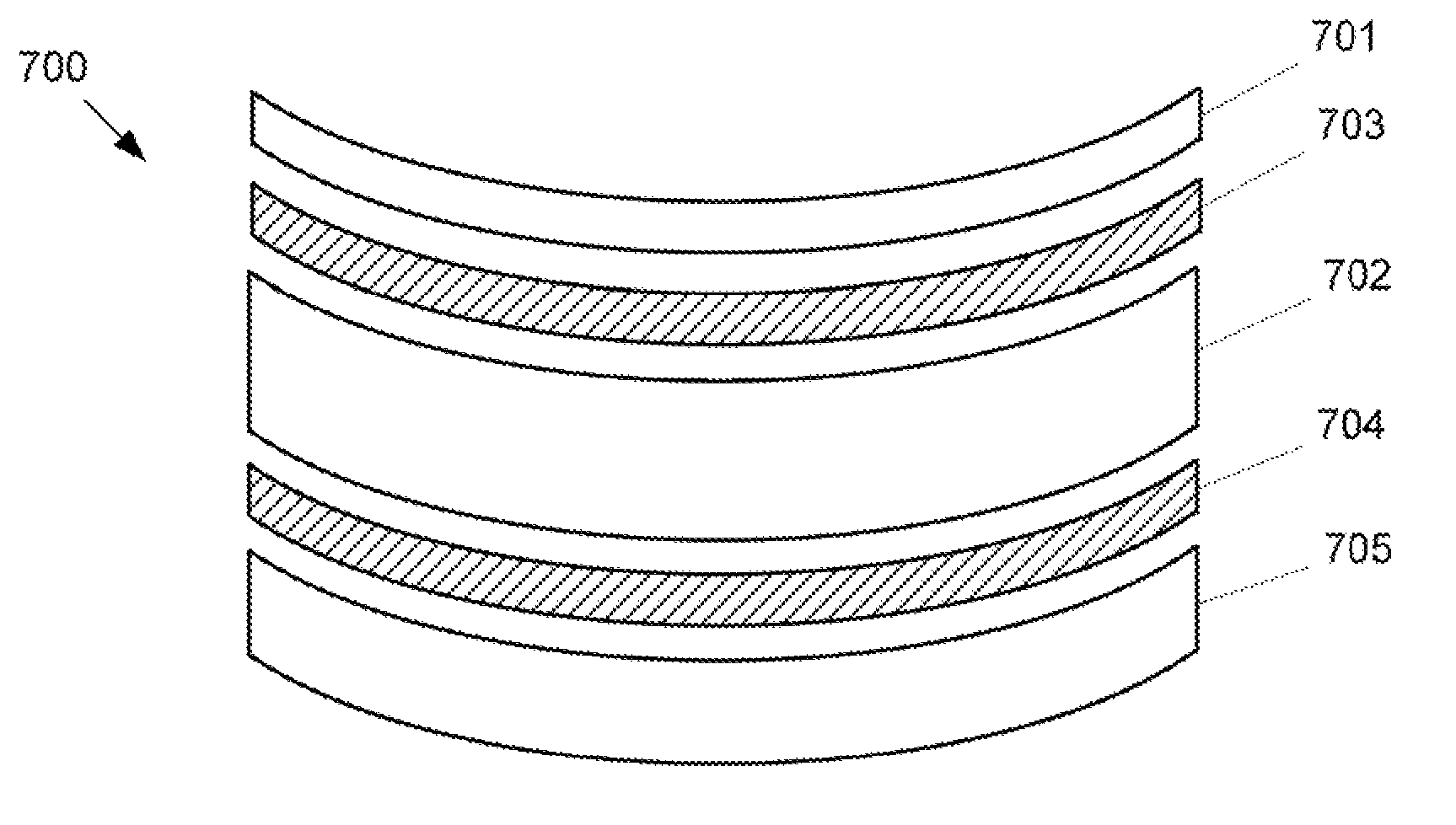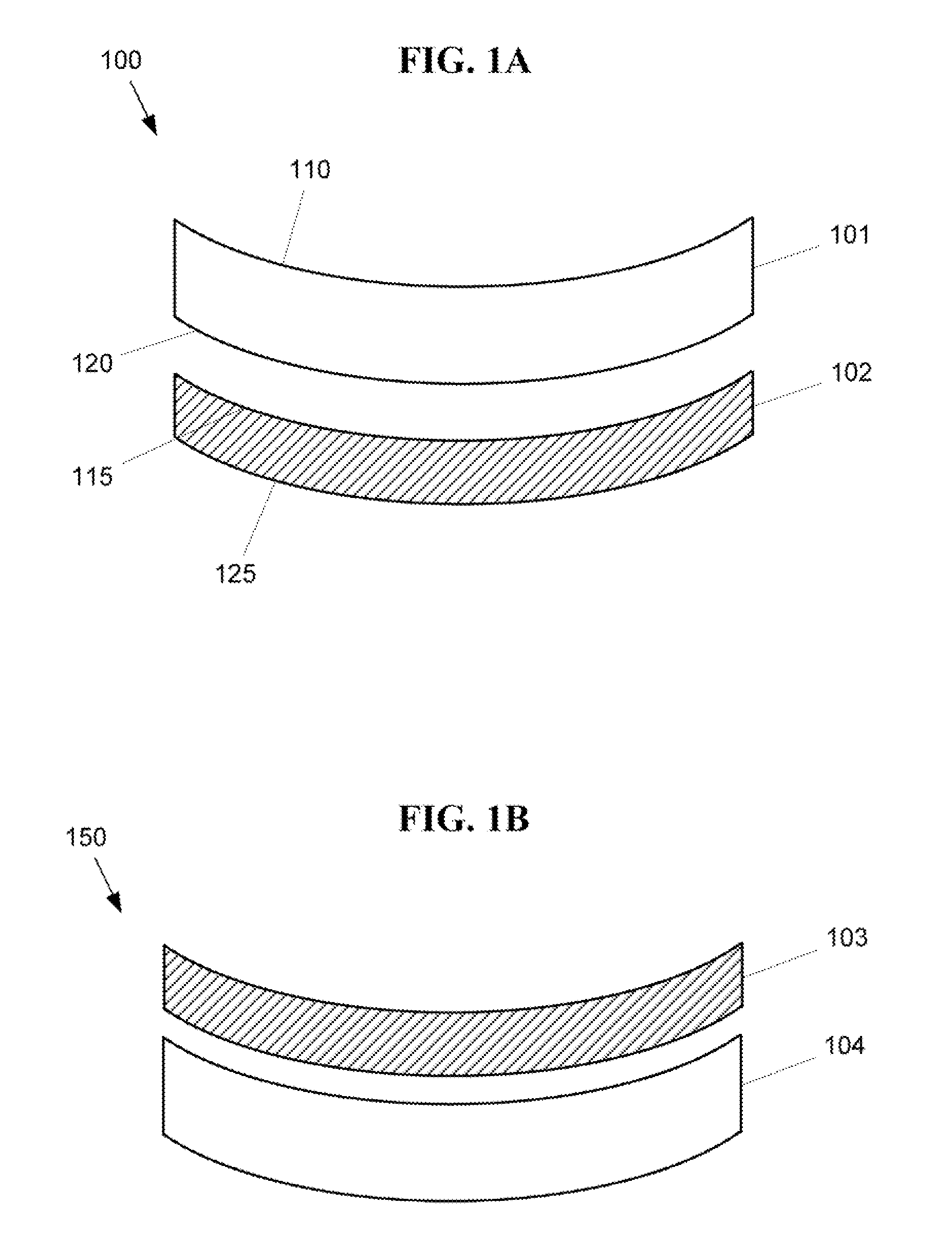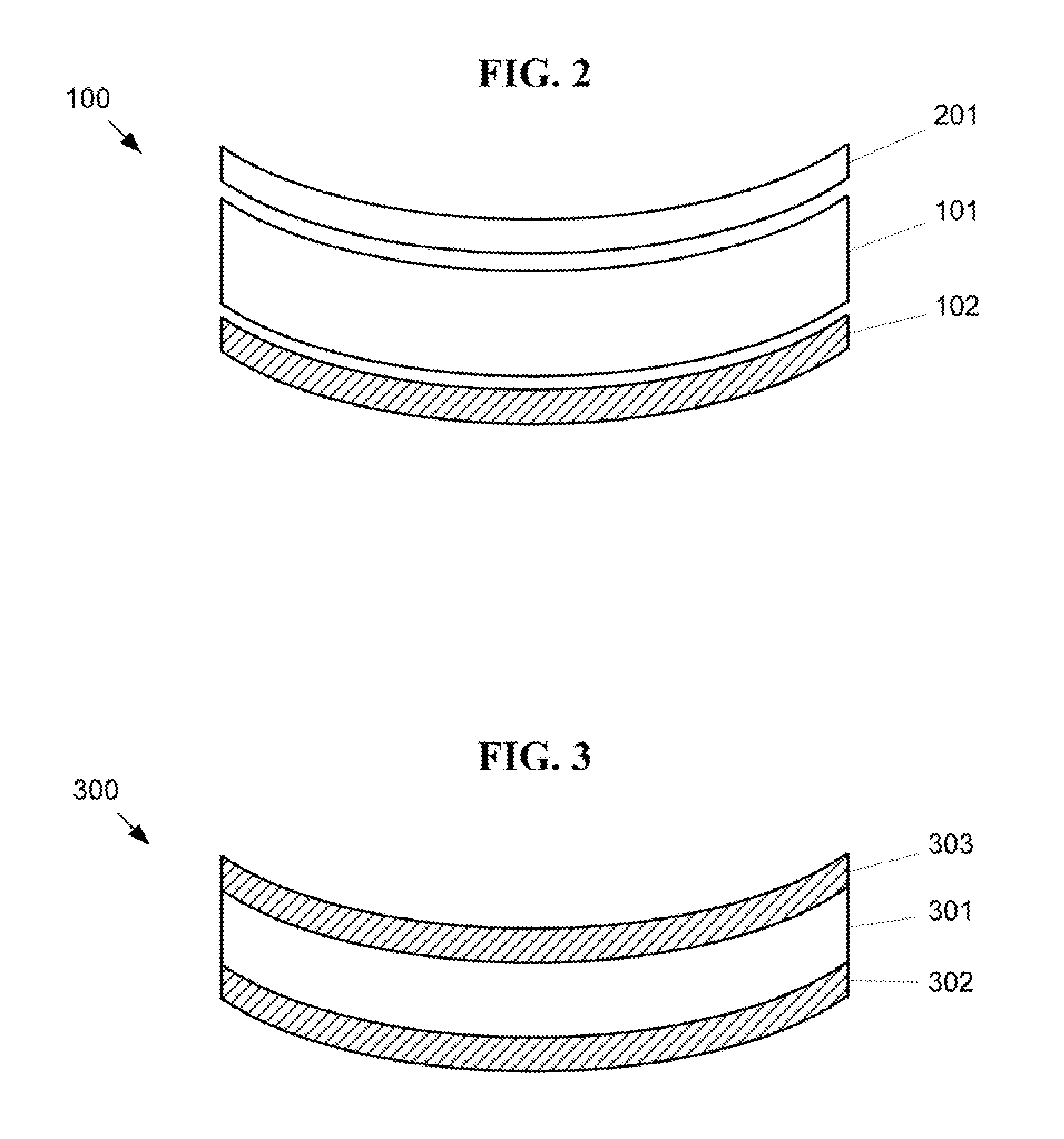Color balanced ophthalmic system with selective light inhibition
a color-balanced ophthalmic system and light-inhibition technology, applied in the field of color-balanced ophthalmic systems with selective light-inhibition, can solve the problems of increased risk of oxidative damage, damage or even death of these cells, and buildup of pigment lipofuscin in the retina, so as to achieve better transmission of visible light
- Summary
- Abstract
- Description
- Claims
- Application Information
AI Technical Summary
Benefits of technology
Problems solved by technology
Method used
Image
Examples
Embodiment Construction
[0050]Embodiments of the present invention relate to an ophthalmic system that performs effective blue blocking while at the same time providing a cosmetically attractive product, normal or acceptable color perception for a user, and a high level of transmitted light for good visual acuity. An ophthalmic system is provided that can provide an average transmission of 80% or better transmission of visible light, inhibit selective wavelengths of blue light (“blue blocking”), allow for the wearer's proper color vision performance, and provide a mostly color neutral appearance to an observer looking at the wearer wearing such a lens or lens system. As used herein, the “average transmission” of a system refers to the average transmission at wavelengths in a range, such as the visible spectrum. A system also may be characterized by the “luminous transmission” of the system, which refers to an average in a wavelength range, that is weighted according to the sensitivity of the eye at each wa...
PUM
 Login to View More
Login to View More Abstract
Description
Claims
Application Information
 Login to View More
Login to View More - R&D
- Intellectual Property
- Life Sciences
- Materials
- Tech Scout
- Unparalleled Data Quality
- Higher Quality Content
- 60% Fewer Hallucinations
Browse by: Latest US Patents, China's latest patents, Technical Efficacy Thesaurus, Application Domain, Technology Topic, Popular Technical Reports.
© 2025 PatSnap. All rights reserved.Legal|Privacy policy|Modern Slavery Act Transparency Statement|Sitemap|About US| Contact US: help@patsnap.com



